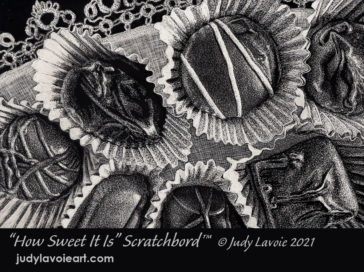Two Passions
I love scratchboarding and I love chocolate, so I decided to combine the two in creating How Sweet It Is. I painted a big watercolor of chocolates years ago, Decadence, and it has always ranked among my personal favorite paintings. Even though this is a very very small artwork – just 4.5″ x 3″ – it took forever! The image was created with tiny marks into the black surface, slowly working my way throughout the panel. To be able to … Read More

